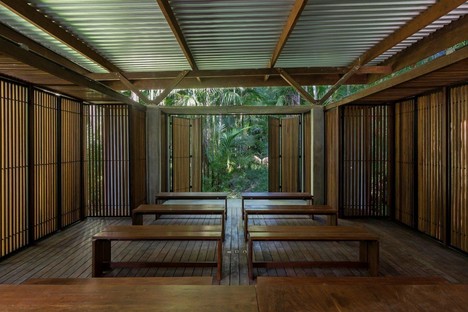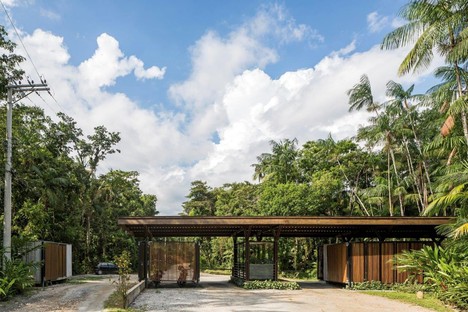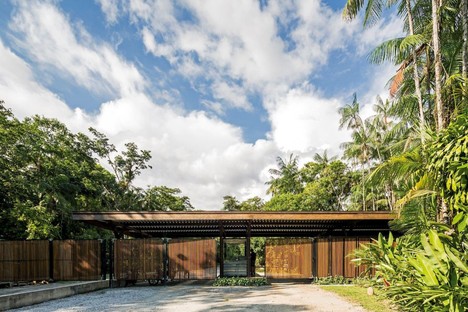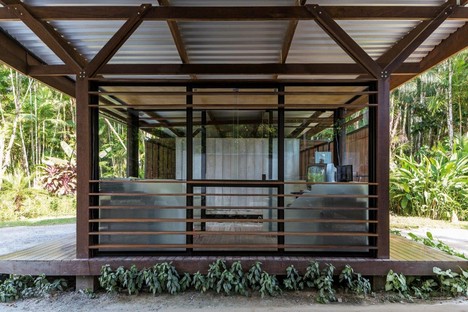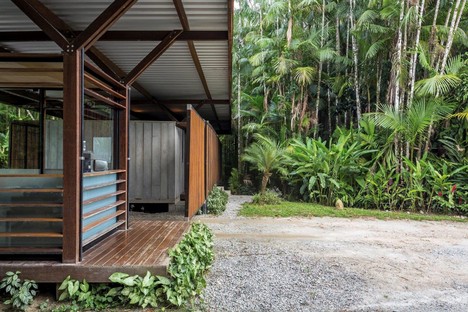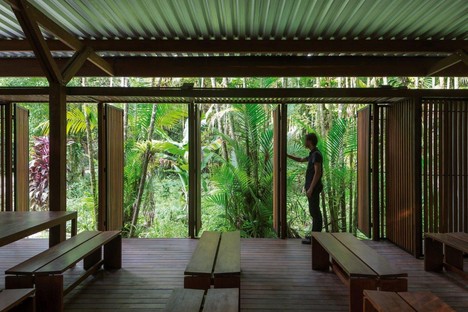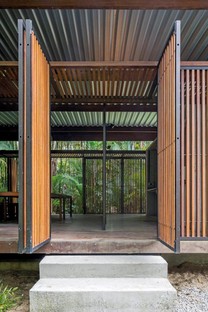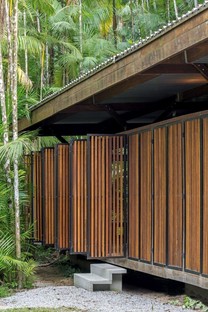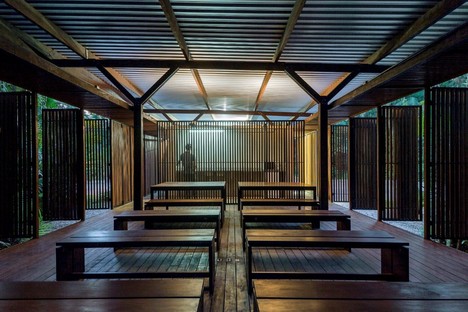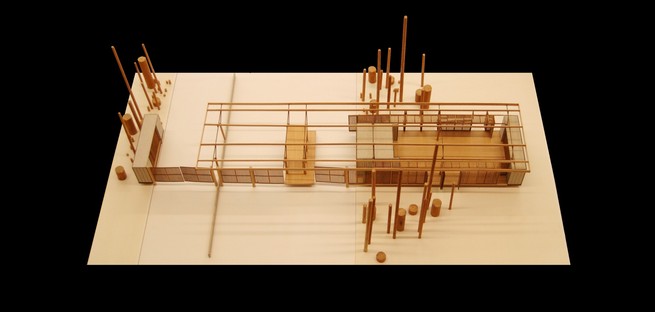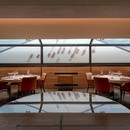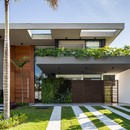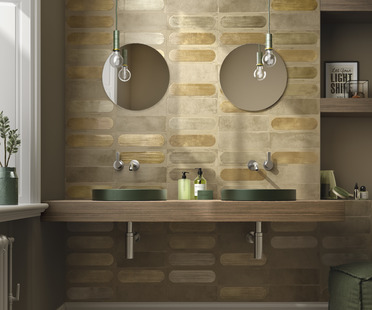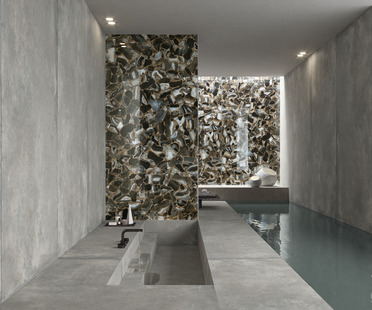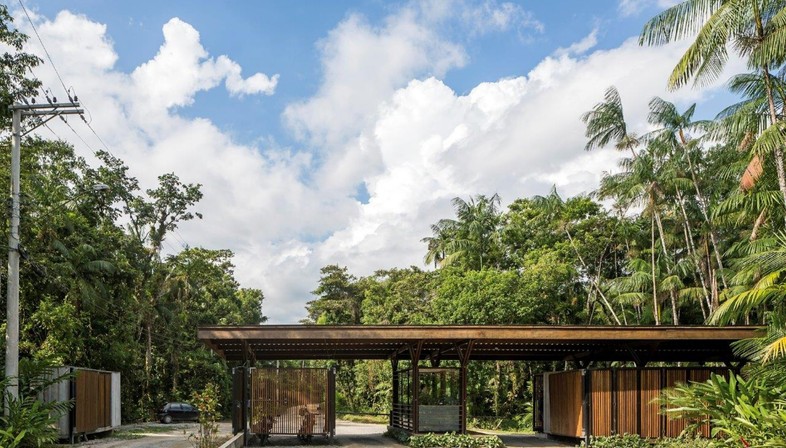
Brazilian architectural studio Apiacás Arquitetos designed a flexible multi-purpose pavilion serving an apartment building near Barra do Una, the famous beach close to São Paulo, Brazil.
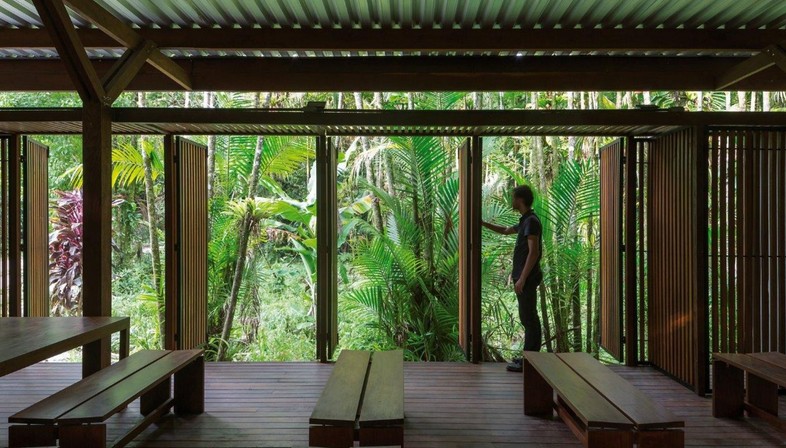
The structure is made out of standard modular timber elements with metal connections for easy assembly and dismantling and a concrete foundation. The pavilion is raised about 50 cm above the ground to protect it against flooding from a nearby waterway. The rectangular strips of metal on the roof and the size of the building, 35 x 6 metres, establish the continuity of the different spaces contained in the pavilion. In addition to the reception desk, located in a central position with respect to the entrances, the pavilion includes a big space that may be used to host events or as a service centre for residents and a series of accessory spaces. The wooden panels on the sides of the pavilion also serve another function, acting as filters to help balance sunlight in the volume.
The interiors are decorated with the same type of wood as the structure and feature the same severity and simplicity of construction. The pavilion’s extreme permeability, with its filter walls and peek-a-boo effect, allow it to fit perfectly into its natural surroundings.
(Agnese Bifulco)
Architects: Apiacás Arquitetos / Principal Architects: Acácia Furuya, Anderson Freitas & Pedro Barros
Collaborators: Daniela Santana, Francisco Veloso, Leonar Vaz Pinto, Otávio Filho, Pedro Paredes
Location: São Sebastião, Brazil
Images courtesy of Apiacás Arquitetos photo by Leonardo Finotti
www.apiacasarquitetos.com.br
www.leonardofinotti.com










